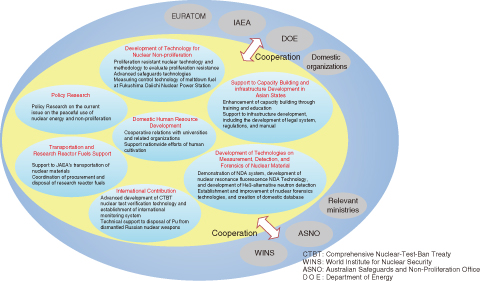
Fig.11-1 JAEA activities toward the development of science and technology for nuclear nonproliferation
We are going to contribute even more to the reinforcement of nuclear nonproliferation and security through the development of technologies for safeguards, nuclear forensics, and the detection of nuclear materials. We are also going to engage in policy research and analysis, and support the capacity building of human resources and infrastructure development in the Asian region, as well as provisional operation of the CTBT international monitoring system, among other initiatives.
The Japan Atomic Energy Agency (JAEA) has been conducting the following technological and human resource development activities related to nuclear nonproliferation and security, in cooperation with relevant domestic and overseas organizations (Fig.11-1).
Development of Nuclear Nonproliferation Technology for Japanese and International Applications
We have been examining the concept of nuclear proliferation resistance and evaluation methods by participating in an international project on innovative reactors and the nuclear fuel cycle, as well as the Generation IV International Forum (GIF).
We have been conducting joint research toward advanced nuclear nonproliferation and security with the U.S. Department of Energy (DOE). We also ratified the new project and discussed the new research themes during the 26th permanent coordinating group meeting in March 2014. We have been developing nondestructive assay technology for material accountancy of molten fuels in the Tokyo Electric Power Company, Incorporated Fukushima Daiichi Nuclear Power Station (1F). The technology is based on measurement of passive γ-ray emission from fission products coexisting with nuclear materials. We analyzed the properties of γ-rays leaking from a canister storing molten fuels. From the securing broad options perspective for final disposal, we have initiated a program to develop the safeguard technology that will be applied to the spent fuel direct repository facilities as an alternative option for high-level radioactive waste disposal.
Contributions to the International Community Based on Our Expertise and Experience
To establish a global verification regime for nuclear tests, we have been provisionally operating facilities of the international monitoring system of the Comprehensive Nuclear-Test-Ban Treaty (CTBT) and the National Data Center (NDC). In April 2013, when the Takasaki radionuclide monitoring station detected xenon isotopes that were thought to have originated from a North Korean nuclear test announced two months earlier, we contributed to the government’s evaluation using Japan’s CTBT national operation system by conducting analysis using the NDC’s own methods.
Support for Government Policy Formulation Based on Our Expertise
As a think tank in this area, we conduct research on measures to ensure nuclear nonproliferation and security on the backend of the nuclear fuel cycle. In particular, for the direct disposal of spent nuclear fuel, we conducted the literature review and the site survey for the disposal plan in Finland, and for the safeguards and nuclear security measures of the International Atomic Energy Agency (IAEA). Moreover, we have examined institutional measures such as safeguards to be reviewed in the final disposal site.
Support for JAEA’s Transportation and Duties to Research Reactor Fuels
We offer support to the nuclear transportation conducted by JAEA R&D Institutes/Centers, and we have coordinated the procurement of fresh fuels and disposal measures for the spent fuel for our research reactors. Through these activities, we contribute to the Global Threat Reduction Initiative (GTRI), which has strengthened global nuclear security by promoting the systematic return of highly enriched uranium to the United States.
New Efforts on Nuclear Security
On the basis of commitments made by the Japanese government at the Nuclear Security Summit in April 2010, we established the Integrated Support Center for Nuclear nonproliferation and Nuclear Security (ISCN). ISCN conducts capacity building and infrastructure development, focusing on the Asian region. There were approximately 500 participants (approximately 320 of whom were from Asian states) in the training courses on nuclear security and safeguards and other activities in FY 2013.
Furthermore, we have been conducting the research and development of technologies for the measurement to improve nuclear material accountancy, detection of nuclear materials and nuclear forensics in cooperation with the United States, and will continue to contribute to international efforts by establishing highly precise and reliable technologies. Topic 11-1 is one of the results of the research on nuclear security.